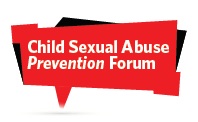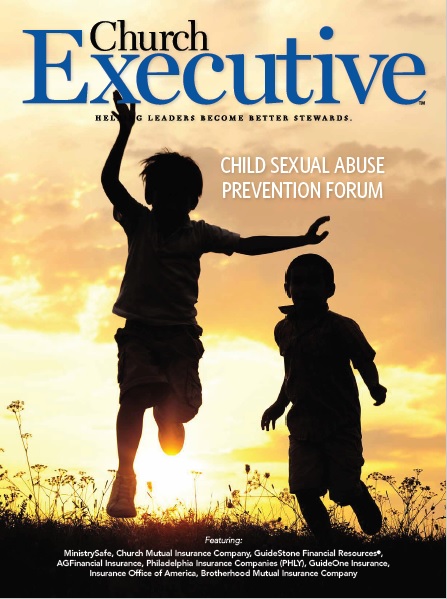
 How to assess your church’s child sexual abuse risk points — and how to do (much) better
How to assess your church’s child sexual abuse risk points — and how to do (much) better

Assistant Vice President — Risk Control
Church Mutual Insurance Company, S.I. = a stock insurer1
In many churches, leaders think child sexual abuse “can’t happen here.” What’s the reality?
Guy A. Russ: Any organization that serves children must understand the statistics: one in four girls and one in 13 boys are likely to be abused sexually. And only 38 percent ever report it. Of those who do, about 91percent are abused by someone they know or their family knows.
On the claims side, we get at least one call a day about suspected abuse or an allegation of abuse.
Churches generally rely on volunteers — and it seems like there are never enough. This, coupled with a high degree of trust, make churches especially vulnerable.
Finally, most religious organizations allocate their financial resources to their core ministry, not necessarily risk management. So, risks like this can fall off the radar.
It’s also important to realize that this type of abuse can happen online — and cross over into the physical world — so mechanisms need to be in place regarding cyberspace, as well.
Can a church assess the ‘risk’ or ‘likelihood’ of a child sexual abuse allegation occurring on its campus?
Russ: Yes. In fact, we have a number of tools on our website that are free and available to anyone, not just policyholders. Those resources help churches look at their policies and procedures — what do they have in place? And more important, are those really being followed? They help assess decision-makers — do they understand how to screen for and recognize the behaviors of a sexual abuser? This is especially important since, as I mentioned, most abusers are familiar to the victim.
Finally, these resources help church leaders judge the oversight and monitoring of their safety systems around this risk. Can church leaders actually see what’s happening in their organization, and sustain it in terms of preventative action?
In the MinistrySafe article, it states that ministry leaders tend to gravitate to the least expensive policies and practices. Has this been your experience?
Russ: Unfortunately, yes. And doing so leaves “holes” that abusers become very good at recognizing quickly. All the more reason to put in a multilayered approach — multiple barriers of protection that include things like screening appropriately and asking questions meant to elicit high-risk responses and signal abusive behaviors. Doing background checks is only a minimum standard for what needs to be done.
Additionally, church leaders must be sure the two-adult rule is in place so that no child is left alone with a single adult; supervision practices are up to speed; adults interacting with children — and children interacting with each other — are supervised; and that everyone knows how to report suspicious activity (and that the church immediately follows up with any report, including notifying the church’s insurance carrier). The carrier is there to help; we have resources to assist in these situations.
Once all these layers are in place, comprehensive and repeated training must be done.
 How can a church know it’s insured as fully as possible with regard to child sexual abuse allegations and claims?
How can a church know it’s insured as fully as possible with regard to child sexual abuse allegations and claims?
Russ: Having product and claims experience at the carrier level is very, very important when vetting carriers. What types of products does the carrier bring to the table specifically related to these risks?
We were on the forefront of this at Church Mutual, offering a separate sexual misconduct coverage back in the mid-1980s, for churches. Prior to that, these claims fell under the language of a ‘general liability policy’ that was relatively vague, and didn’t provide enough specificity as to how the insurance company would act when an allegation or an incident occurred.
Also, ask how many sexual abuse or sexual misconduct claims the carrier has defended, and what it has learned from the results. How has it incorporated those learnings into its processes and products?
What advice can you offer a church seeking to align itself with a knowledgeable insurance agent?

Russ: Again, this goes back to product and claims experience. How many organizations similar to yours does that agent deal with? How many situations has he or she been involved in around sexual abuse of children? The agent needs to be able to advise on coverages and on the appropriate next steps should an allegation of abuse arise.
You’re quoted in the MinistrySafe article as saying, “Of course, it’s far better to prevent sexual misconduct and abuse before it occurs.” What resources can you offer to help church leaders do just that?
Russ: First, we have risk control consultants across the country who will work directly with policyholders and church leaders to understand and assess their risks. Again, abusers can use very insidious behaviors, so our risk control consultants are well-trained in identifying blind spots in overall safety systems.
As I mentioned before, we also have many resources on our website, including 10 Essentials of Sexual Abuse Prevention and a downloadable Sexual Abuse Prevention Assessment, which is especially helpful during COVID-19 if one of our risk control consultants can’t come help in person. Those resources are available at churchmutual.com/abuse.
We have also partnered very closely with Gregory Love, Kimberlee Norris and MinistrySafe, so Church Mutual policyholders get a nice discount on those tools. We’re thankful for that partnership, because MinistrySafe does a very good job of preparing policyholders to reduce this risk.
— Reporting by RaeAnn Slaybaugh
1Church Mutual is a stock insurer whose policyholders are members of the parent mutual holding company formed on 1/1/20. S.I. = a stock insurer.


